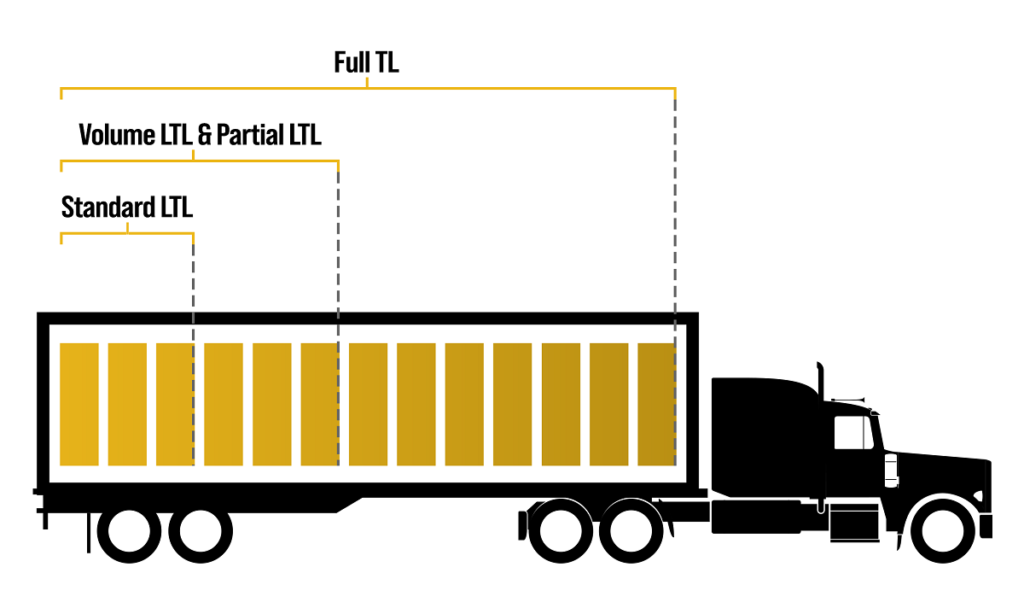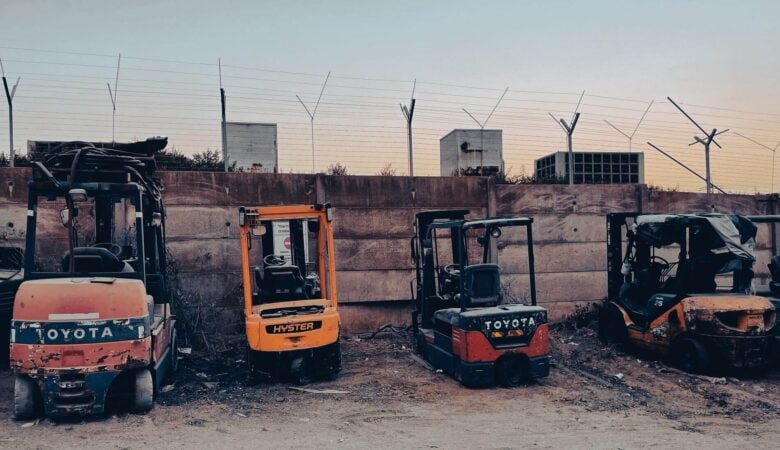Freight transport can keep any shipper on their toes. In the case of ground transportation shipment, sometimes a shipper may not know which method works best for them. There are two known forms of ground shipping services, these include Full Truckload (FTL) and Less Than Truckload (LTL).
You might be wondering, what’s the difference between the two? Despite having a lot of similarities, there are some differences that set them apart. The biggest being that one service transports your cargo directly to the destination, while the other makes several stops and tradeoffs along the way. Many shippers use FTL and LTL for various reasons.
When considering these options, make sure you consider how your chosen transport can affect the time of arrival, pricing and weighing the risks. Let’s take a closer look at the dissimilarities between LTL and FTL services. By the end of this blog, you’ll be able to determine which service is better for you; Full Truckload vs. Less Than Truckload freight?

What Does Full Truckload (FTL) Mean?
In the simplest of terms, a Full Truckload (FTL) or a Truckload (TL), is a semi-truck that is completely filled to the brim and delivers one large freight. Though, the shipment doesn’t always have to fill up the entire space of the truck. Instead, a shipper can exclusively reserve it. You’ll usually see a 53’ dry van trailer hauling just a class 8 tractor on the highway. Refrigerated and open deck trailers are also common.
- The carrier only hauls one customer’s shipment.
- The shipper can use half of the truck but reserve its entire capacity.
What Does Less Than Truckload (LTL) Mean?
A Less Than Truckload (LTL) involves an 18-wheeler hauling multiple customer shipments, all bunched together in the same trailer. This method of shipment is ideal for smaller freight that can be combined into one trailer. They’re often taken to different destinations across the globe.
- Great for shipments that can fill 750 cubic sq. ft or up to 6 pallets.
- Makes multiple stops at different terminals.
What Is The Difference Between LTL And FTL Freight?
There’s a lot of decision making that goes into which shipping method is right for you. Perhaps you have an antique artifact you want to be shipped in mint condition. Maybe your company is looking for a more affordable option to ship your package. Whatever the case may be, you have to determine which method works best for your freight and aligns with your business needs. Here are a couple of tips to help you make the right decision:
- For fragile freight that can be shipped over 12 pallets, use FTL.
- If you have strict pick-up and delivery times to meet, it’s also considered a FLT shipment.
- On the other hand, if you’re shipping 6 pallets worth of freight and it’s well-packaged, an LTL might be more suitable.
- If your company doesn’t have a strict delivery time to meet and wants to save money, an LTL is also a better option.
Consider The Pricing For Truckload Vs. LTL
There are clearly some differences to consider between LTL and FTL. Though, the biggest concern most companies have is the cost.
The National Motor Freight Traffic Association (NMFTA) determines the LTL freight pricing. By the nonprofit organization consisting of several interstate motor carriers, they’re able to classify different types of freight by three distinctions; commodity, density and if it can be easily transported. Additionally, the LTL carrier may tack on a few more factors that help determine the final cost. They’ll consider your location, where the shipment is going, the NMFC class, how much space it takes up on the truck, and additional hardware needed.
However, Truckload carriers don’t use the NMFTA to help them determine the rate. Nonetheless, Truckload freight does use several variables to calculate the price. Everything from the time of the week, the weight of the shipment, season and fuel costs go into the FTL rate. Oftentimes, these factors tend to make the pricing fluctuate, so make sure you choose a good time to phone in to get a reasonable price.
Who Ships Better: Truckload Vs. Less Than Truckload?

Speed Comparisons:
If you need your shipment delivered ASAP, then go with the Full Truckload. This method reduces transit times. The freight is transported in one full sweep, without any stops, making it the fastest transportation service. On the other hand, you may have a more flexible delivery date. An LTL service has longer transit times and makes several stops before reaching its final destination. If you like the affordable prices and don’t mind the wait, then this would be the best option for your company.
Cost Comparisons:
As previously discussed, a shipper might opt for FTL service for their larger or fragile shipments. Despite the higher price tag, it’ll be more cost-effective for their company to use this shipping method. We also know that smaller shipments work best with LTL transportation. Not to mention, it’s cheaper. The total cost of transport is divided by several customers, hence the cheaper rates. Remember, when using LTL service several factors are taken into consideration when determining costs, including the (NMFTA) classification. Though, the lower the class, the less money you’ll have to pay out of pocket. Though, the best way to reduce costs for both types of shipment is to entrust your load with a freight forwarder. They offer more affordable rates because they eliminate the middleman, performing both the manufacturing and transportation of your goods.
Risk Comparisons:
There are some risks to consider when using these freight shipping methods, though. LTL certainly has some major risks associated with it. For every stop at a terminal, you have to unload and reload your cargo. This increases the chances of theft and cargo damage. Also, your shipment could be misloaded during loading and unloading procedures at various facilities.
Luckily, you don’t have to worry about those kinds of problems with an FTL service. Your shipment just goes straight to your destination. You might run into some minor issues like fuel and equipment problems, which could delay your shipment’s delivery time. For the most part, though, FTL doesn’t have too many challenges.
Weight and Shipment Size:
Now let’s move on to shipment sizes. Less Than Truckload shipments often range between 1 and 6 pallets and can weigh anywhere from 200 to 5,000 lbs.
A TL can take on a lot more than an LTL though. Typically, a Full Truckload can handle anywhere from 24 to 30 pallets and up. When using this method, how much space your shipment takes up in the trailer matters more than its weight. Shipments can range anywhere from 5,000 pounds to 45,000 pounds and keep going up.
Key Things to Know When Shipping LTL Instead Of TL
- Your shipment will be handled more carefully.
- There are more accessories to account for.
- The NMFTA class helps determine your rate.
- Double-check that you have the right shipment dimensions and NMFTA class.
- Transit is very unpredictable.
- Appointment times are pretty standard.
- All LTL trailers come with roll doors that have a low clearance.
What Does FTL & LTL Mean For You?
At the end of the day, you have to decide whether FTL or LTL makes the most sense for your shipment. It all comes down to pricing and how soon you need your shipment to arrive at its final destination. Arguably, these aspects alone can help you make the right decision for you and your company.









